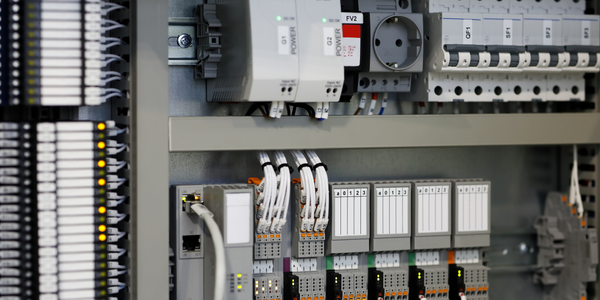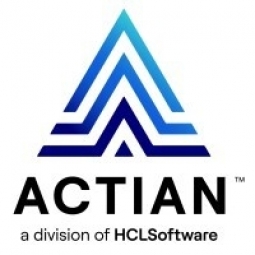Technology Category
- Application Infrastructure & Middleware - Database Management & Storage
- Infrastructure as a Service (IaaS) - Cloud Databases
Applicable Industries
- Finance & Insurance
- Retail
Applicable Functions
- Maintenance
Use Cases
- Asset Health Management (AHM)
- Asset Lifecycle Management
Services
- Data Science Services
- Hardware Design & Engineering Services
About The Customer
The customer in this case study is a large global bank, one of the world’s largest financial institutions. It provides individuals, small- to mid-sized businesses, and large public, private, and governmental institutions with a full range of banking, investing, asset, and risk management services. The bank interacts with more than 50 million consumers and small businesses through its 5,000 retail banking offices and 16,000 ATMs. It also has about 30 million active online banking users and more than 15 million mobile users. The bank had been relying on Netezza Twinfin for its analytics solution for years before the support for Netezza ended.
The Challenge
A large global bank was faced with a significant challenge when support for its analytics solution, Netezza Twinfin, ended. The bank needed a new analytics solution that would not only replace Netezza but also deliver deeper insights faster, scale with the bank's growth, and keep costs low while delivering high performance. The bank required a solution that would support a single data repository for all positions across all asset classes, facilitating ad hoc analysis of positions and their sensitivity to market factors. The bank also wanted a solution that could ingest, analyze, and act on massive volumes of both structured and unstructured data in short order. The bank had long desired deeper and more timely insights into its risk exposure, as Netezza provided risk and opportunity value analyses only once per day via batch data dump. The bank aimed for a solution that could deliver insights in sub-minute intervals throughout the day. Performance, scalability, reliability, and cost were also critical factors in the bank's decision.
The Solution
After a thorough review of numerous alternatives, the bank selected the Actian Vector Analytics Database and the Actian Data Platform™ to replace Netezza Twinfin. Actian Vector is a true column-store database that provides unrivaled abilities to connect, analyze, and act on big data. It turns even commodity hardware into a massively parallel high-performance data processing and real-time analytics solution capable of processing complex queries entirely in memory and returning actionable insights up to 30 times faster than competing solutions. The bank compared the performance of Actian Vector against Netezza Twinfin and found that Actian Vector, running on a compute cluster with only 5 nodes, performed on par with Netezza, which ran on a 24-node compute cluster. Actian Vector also outperformed its rivals in areas such as data compression, volume handling ability, load times, stress, and ad hoc query responses. The bank appreciated the flexibility and scalability ensured by Actian Vector, which runs on commodity hardware on top of Windows or Linux. Actian’s level of expertise and commitment to partnership also played a significant role in the bank's decision.
Operational Impact
Quantitative Benefit

Case Study missing?
Start adding your own!
Register with your work email and create a new case study profile for your business.
Related Case Studies.

Case Study
Improving Production Line Efficiency with Ethernet Micro RTU Controller
Moxa was asked to provide a connectivity solution for one of the world's leading cosmetics companies. This multinational corporation, with retail presence in 130 countries, 23 global braches, and over 66,000 employees, sought to improve the efficiency of their production process by migrating from manual monitoring to an automatic productivity monitoring system. The production line was being monitored by ABB Real-TPI, a factory information system that offers data collection and analysis to improve plant efficiency. Due to software limitations, the customer needed an OPC server and a corresponding I/O solution to collect data from additional sensor devices for the Real-TPI system. The goal is to enable the factory information system to more thoroughly collect data from every corner of the production line. This will improve its ability to measure Overall Equipment Effectiveness (OEE) and translate into increased production efficiencies. System Requirements • Instant status updates while still consuming minimal bandwidth to relieve strain on limited factory networks • Interoperable with ABB Real-TPI • Small form factor appropriate for deployment where space is scarce • Remote software management and configuration to simplify operations

Case Study
Digital Retail Security Solutions
Sennco wanted to help its retail customers increase sales and profits by developing an innovative alarm system as opposed to conventional connected alarms that are permanently tethered to display products. These traditional security systems were cumbersome and intrusive to the customer shopping experience. Additionally, they provided no useful data or analytics.

Case Study
How Sirqul’s IoT Platform is Crafting Carrefour’s New In-Store Experiences
Carrefour Taiwan’s goal is to be completely digital by end of 2018. Out-dated manual methods for analysis and assumptions limited Carrefour’s ability to change the customer experience and were void of real-time decision-making capabilities. Rather than relying solely on sales data, assumptions, and disparate systems, Carrefour Taiwan’s CEO led an initiative to find a connected IoT solution that could give the team the ability to make real-time changes and more informed decisions. Prior to implementing, Carrefour struggled to address their conversion rates and did not have the proper insights into the customer decision-making process nor how to make an immediate impact without losing customer confidence.

Case Study
Real-time In-vehicle Monitoring
The telematic solution provides this vital premium-adjusting information. The solution also helps detect and deter vehicle or trailer theft – as soon as a theft occurs, monitoring personnel can alert the appropriate authorities, providing an exact location.“With more and more insurance companies and major fleet operators interested in monitoring driver behaviour on the grounds of road safety, efficient logistics and costs, the market for this type of device and associated e-business services is growing rapidly within Italy and the rest of Europe,” says Franco.“The insurance companies are especially interested in the pay-per-use and pay-as-you-drive applications while other organisations employ the technology for road user charging.”“One million vehicles in Italy currently carry such devices and forecasts indicate that the European market will increase tenfold by 2014.However, for our technology to work effectively, we needed a highly reliable wireless data network to carry the information between the vehicles and monitoring stations.”

Case Study
Ensures Cold Milk in Your Supermarket
As of 2014, AK-Centralen has over 1,500 Danish supermarkets equipped, and utilizes 16 operators, and is open 24 hours a day, 365 days a year. AK-Centralen needed the ability to monitor the cooling alarms from around the country, 24 hours a day, 365 days a year. Each and every time the door to a milk cooler or a freezer does not close properly, an alarm goes off on a computer screen in a control building in southwestern Odense. This type of alarm will go off approximately 140,000 times per year, equating to roughly 400 alarms in a 24-hour period. Should an alarm go off, then there is only a limited amount of time to act before dairy products or frozen pizza must be disposed of, and this type of waste can quickly start to cost a supermarket a great deal of money.








